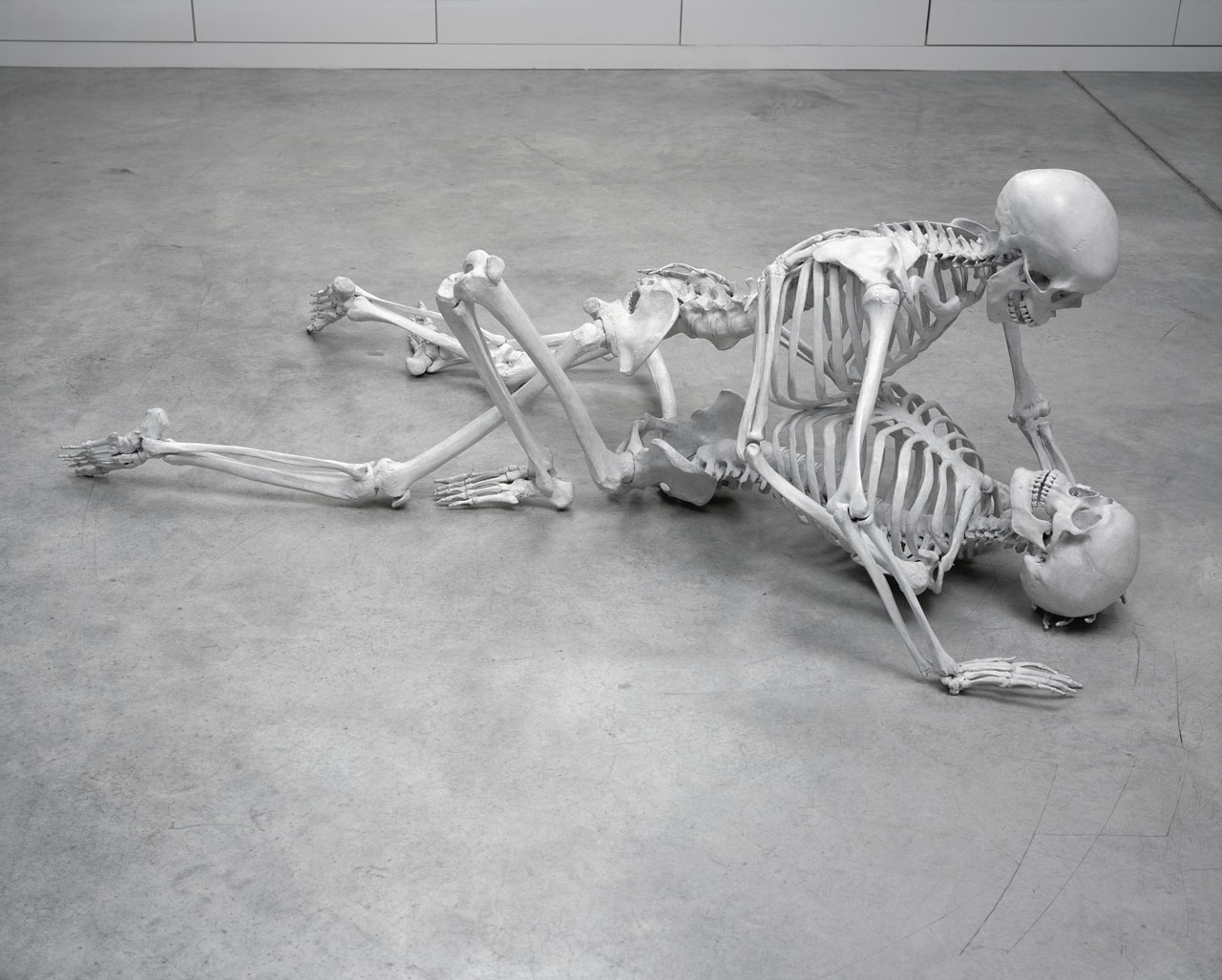
Foundation
Marc Quinn
October 5 → January 6, 2008
Gathering over forty recent works, DHC/ART’s inaugural exhibition by conceptual artist Marc Quinn is the largest ever mounted in North America and the artist’s first solo show in Canada
Ghosts and spectres lurk throughout the exhibition RELATIONS: Diaspora and Painting, which brings me to thinking through a spectral logic, in the spirit of Jacques Derrida’s concept of hauntology.
I see this as a particularly generative way to (re)think the lived experience of diaspora, by conceptualizing it as a haunting of the individual by the recurrence of their inheritance.
I would then propose that the diasporic experience is characterized by living a particular kind of haunting; a “ventriloquizing” [8] (McMullen, 16:14) by one’s inheritance and feeling as though one were a conduit for a bifurcated continuity; it is having “not only our own unconscious, but [also] the unconscious of an other […] which speaks in our stead” [8] (McMullen, 49:00) as much as we speak for ourselves.
Hauntology is, in short, a means of studying being through the logic of ghosts —understood here not as actual ghosts, but as a metaphor for what recurs from the past. For Jacques Derrida, “all questions on the subject of being […] are questions of inheritance” [3] (Derrida, p. 94). He came to understand the past and the ideas that then had purchase as spectres which haunts us, which continues to reproduce themselves in our discourses, to speak through us, even if we thought we’d left them behind.
Thinking diaspora through hauntology then, is thinking of the diasporic subject as being constituted through a haunting by a bifurcated inheritance, as “always doubled in [their] recurrence, always “more than one” [10](Ramond, p. 61).
When we think of diaspora, our starting point is migration, or perhaps more specifically extraction, as diaspora results more from the involuntary, from movement under duress, from the separation of a collective and of extraction from a sociocultural context: in short, bifurcation. The origin of diaspora then, is not found in a homeland, but in bifurcation itself. And from it, spectrality arises; something dies and is (re)born as a spectre which lives within the diasporic person. This inheritor is laden with a coded inheritance; in addition to being themselves they become a kind of crypt, of “cemetery for [pre-extraction] ghosts” [8] (McMullen, 49:00).
Rick Leong’s work offers us a good example of this coded inheritance. The paintings Gold Stream (2019) and Wild Willow (2019) shown in RELATIONS depict Canadian landscapes of sinuous lines against hazy, liquid backgrounds rendered in the tones of the blue hour. The works become a “fusion point of various domains (or registers) of the material world” [9] (Nishida, p. 80) by blending a Chinese aesthetic inheritance — the monochrome of blue-and-white Chinese ceramics — with a Canadian landscapes, anchored in the tradition of the Group of Seven and the modalities of Western painting; this Western practice — and specifically Canadian in its subject matter and the treatment of an empty, wild landscape typical of a Canadian consciousness — is haunted by a Chinese aesthetics. “What is important about the figure of the [diasporic] spectre, then, is that it cannot be fully present: it has no being in itself but marks a relation to what is no longer or not yet” [6] (Fisher, p. 19). That is to say, Leong’s diasporic inheritance can manifest itself only in the present, in relation to a new context: the Chinese blue appears only within the Canadian landscape. The work is thus “stained by time” [6](Fisher, p. 19), by the Chinese (and Canadian) aesthetic past(s). The work itself becomes a diasporic body, always constituted by its redoubling; Chinese and Canadian.
What brings us to this collective position of diaspora, what is shared is not any particular ghost but the state of being haunted, of being “internally redouble […] in anticipation and recollection of oneself” [10] (Ramond, p. 60), of having ghosts by which we are “ventriloquized” [8] (McMullen, 16:14).
A spectre entangles itself into Leong’s paintings, which labour towards this redoubling, and by that token to a reinvention of his inheritance(s). We can only reinvent diasporic inheritance, because after all “inheritance is never a given, it’s always a task.” [3] (Derrida, p. 94)
Movements: RELATIONS is a tool designed by the PHI Foundation’s Department of Education to encourage visitors to develop and elaborate on some key concepts of the exhibition RELATIONS: Diaspora and Painting.
[1] Brah, A. (1997). Cartography of diaspora: contesting identities. London: Routledge.
[2] Brubaker, R. (2005). The 'diaspora' diaspora. Ethnic and Racial Studies, 28 (1), 1-19. doi: 10.1080/0141987042000289997
[3] Derrida, J. (1993). Spectres de Marx: L'état de la dette, la travail du deuil et la nouvelle Internationale. Paris: Galilée.
[4] Fathy, S. (2000). D'ailleurs Derrida. Retrieved from https://www.youtube.com/watch?v=JMQDUrQ6ctM
[5] Faure, B. (1998). The Buddhist Icon and the Modern Gaze. Critical Inquiry, 24 (3), 768-813. Retrieved from www.jstor.org/stable/1344089
[6] Fisher, M. “What Is Hauntology?” Film Quarterly, vol. 66, no. 1, 2013, pp. 16–24.
[7] Hall, S. (1991 [1973]) “Encoding, decoding.” In: During, S (ed.) The Cultural Studies Reader. London: Routledge, pp. 90–103.
[8] McMullen, K. (1983) Ghost Dance. Retrieved from https://www.youtube.com/watch?v=SwkjAuN-_-k
[9] Nishida, K. Trad. Dilworth, D. A., & Viglielmo, V. H. (1973). Art and Morality (Geijutsu to dōtoku, dt.). University of Hawaii Press.
[10] Ramond, C. (2007). Matérialisme et Hantologie. Cités, 30 (2), 53-63. doi:10.3917/cite.030.0053.
Author: Paul Lofeodo
Paul Lofeodo was born in Toronto, Canada and now lives and works in Montreal where he received his Bachelor of Fine Arts with a minor in Sociology from Concordia University. Lofeodo makes photo-based installations dealing with themes of embodiment, performance, hegemony, violence and indexical relations. Influenced by his studies in Sociology, Lofeodo applies marxist and psychoanalytic perspectives to the embodied practices of tradition, identity and social institutions.

Foundation
Gathering over forty recent works, DHC/ART’s inaugural exhibition by conceptual artist Marc Quinn is the largest ever mounted in North America and the artist’s first solo show in Canada
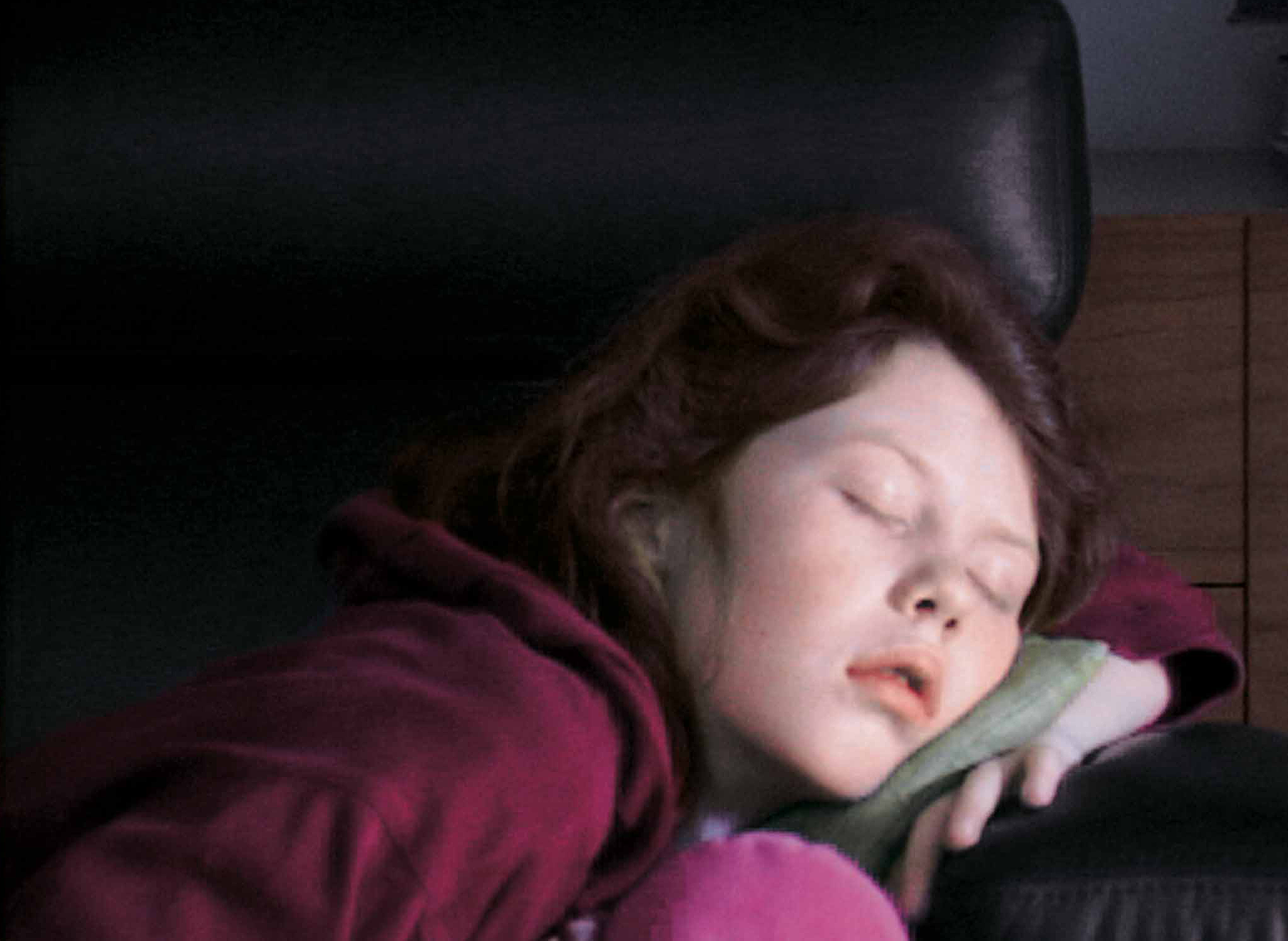
Foundation
Six artists present works that in some way critically re-stage films, media spectacles, popular culture and, in one case, private moments of daily life
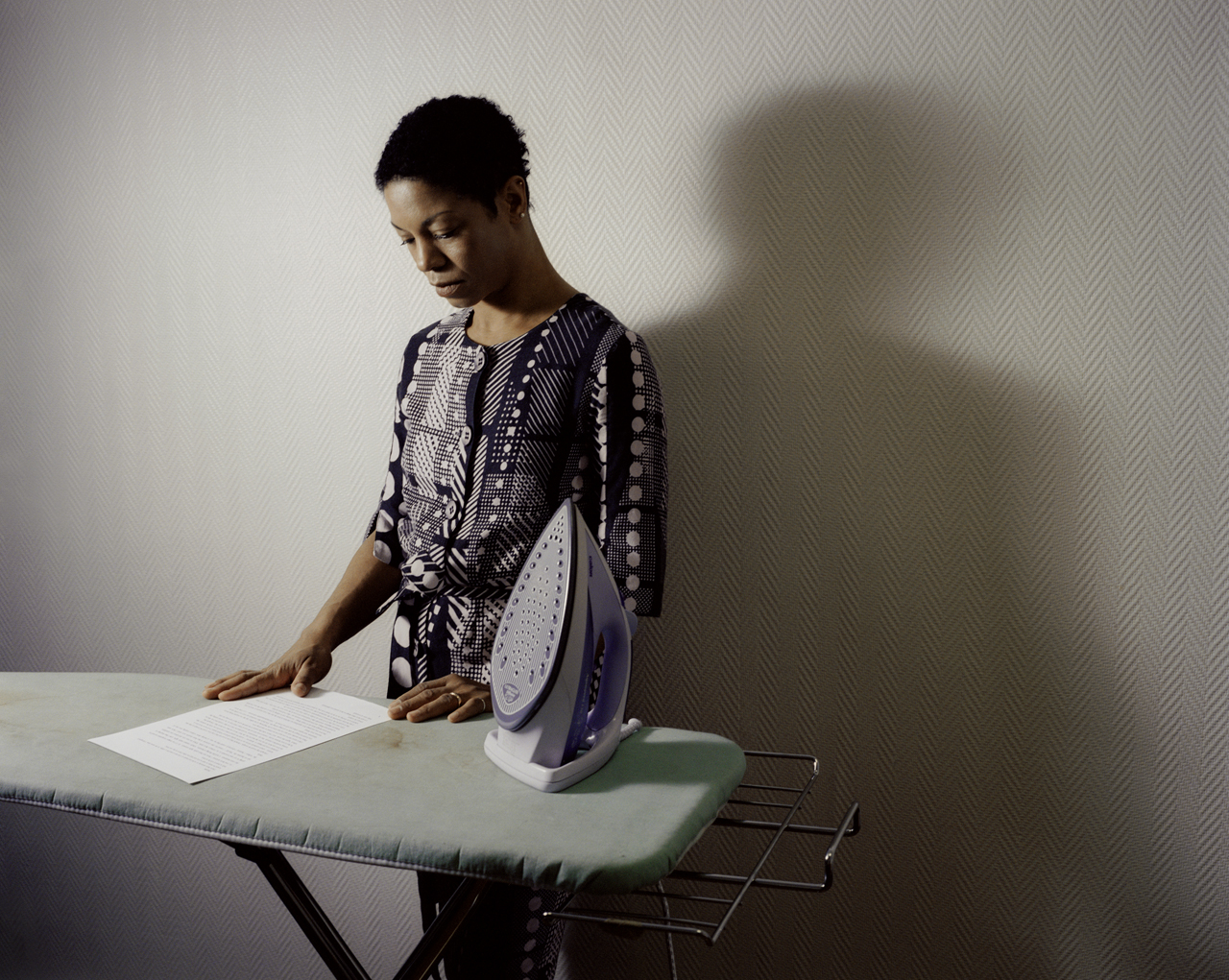
Foundation
This poetic and often touching project speaks to us all about our relation to the loved one
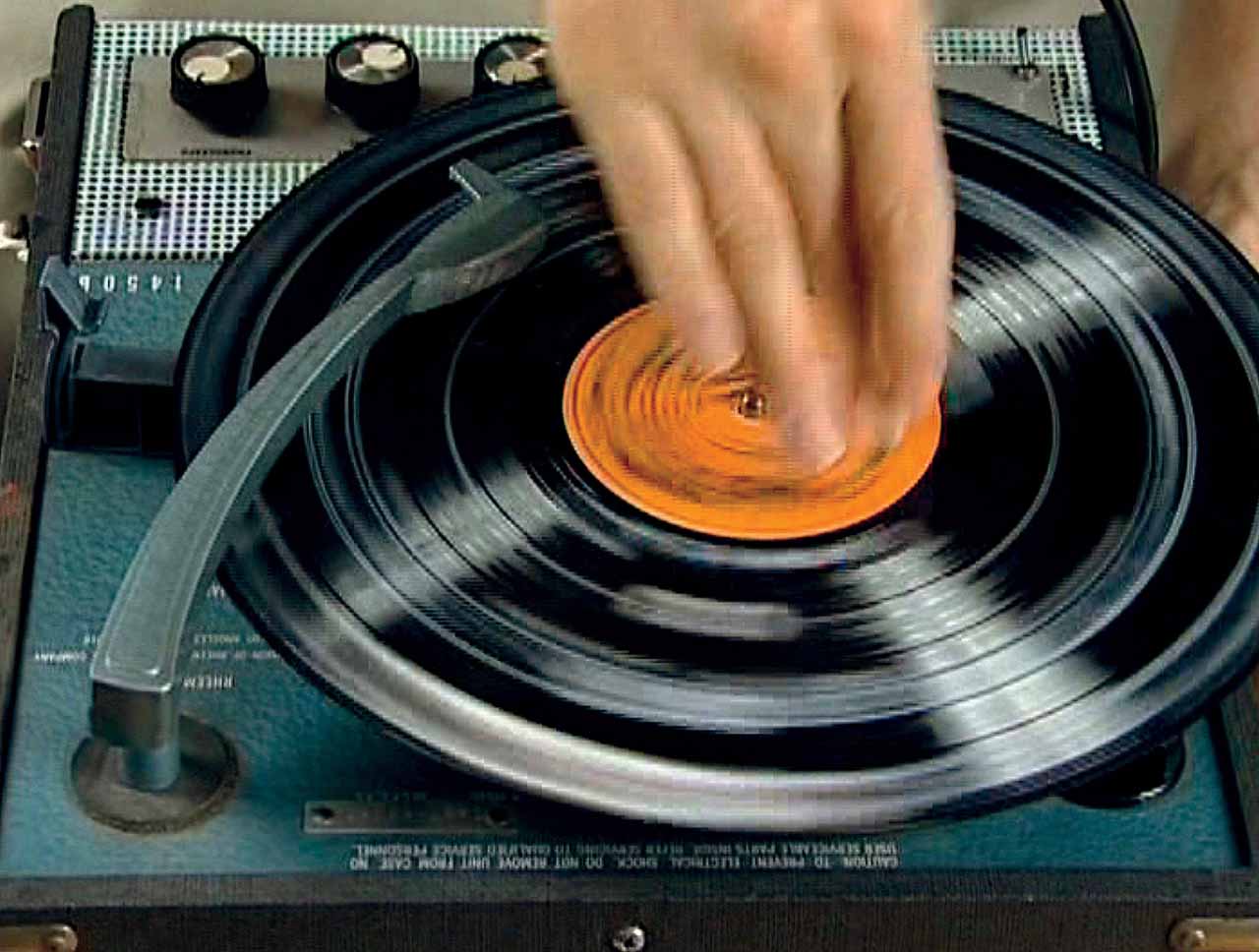
Foundation
DHC/ART Foundation for Contemporary Art is pleased to present the North American premiere of Christian Marclay’s Replay, a major exhibition gathering works in video by the internationally acclaimed artist
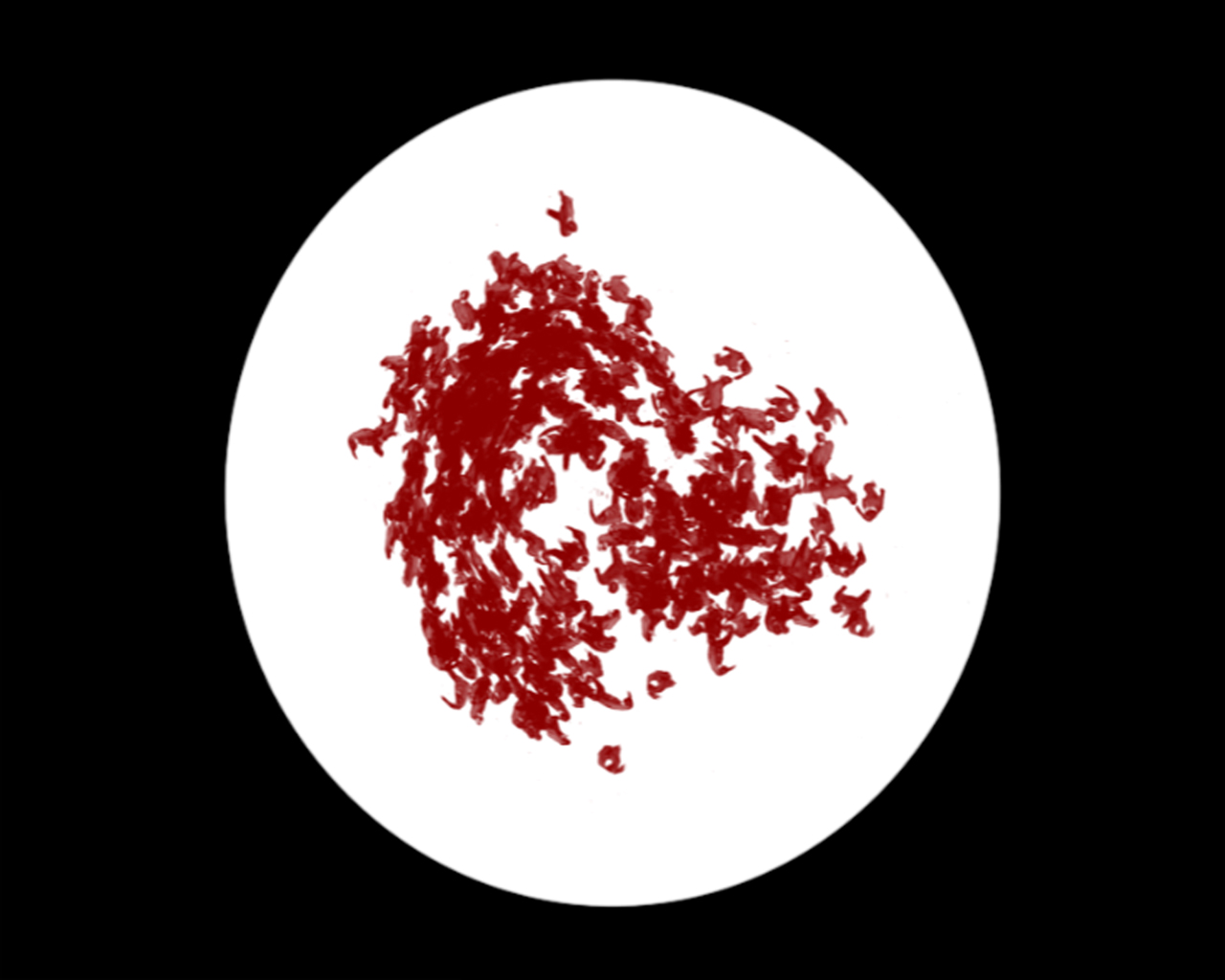
Foundation
DHC/ART is pleased to present Particles of Reality, the first solo exhibition in Canada of the celebrated Israeli artist Michal Rovner, who divides her time between New York City and a farm in Israel
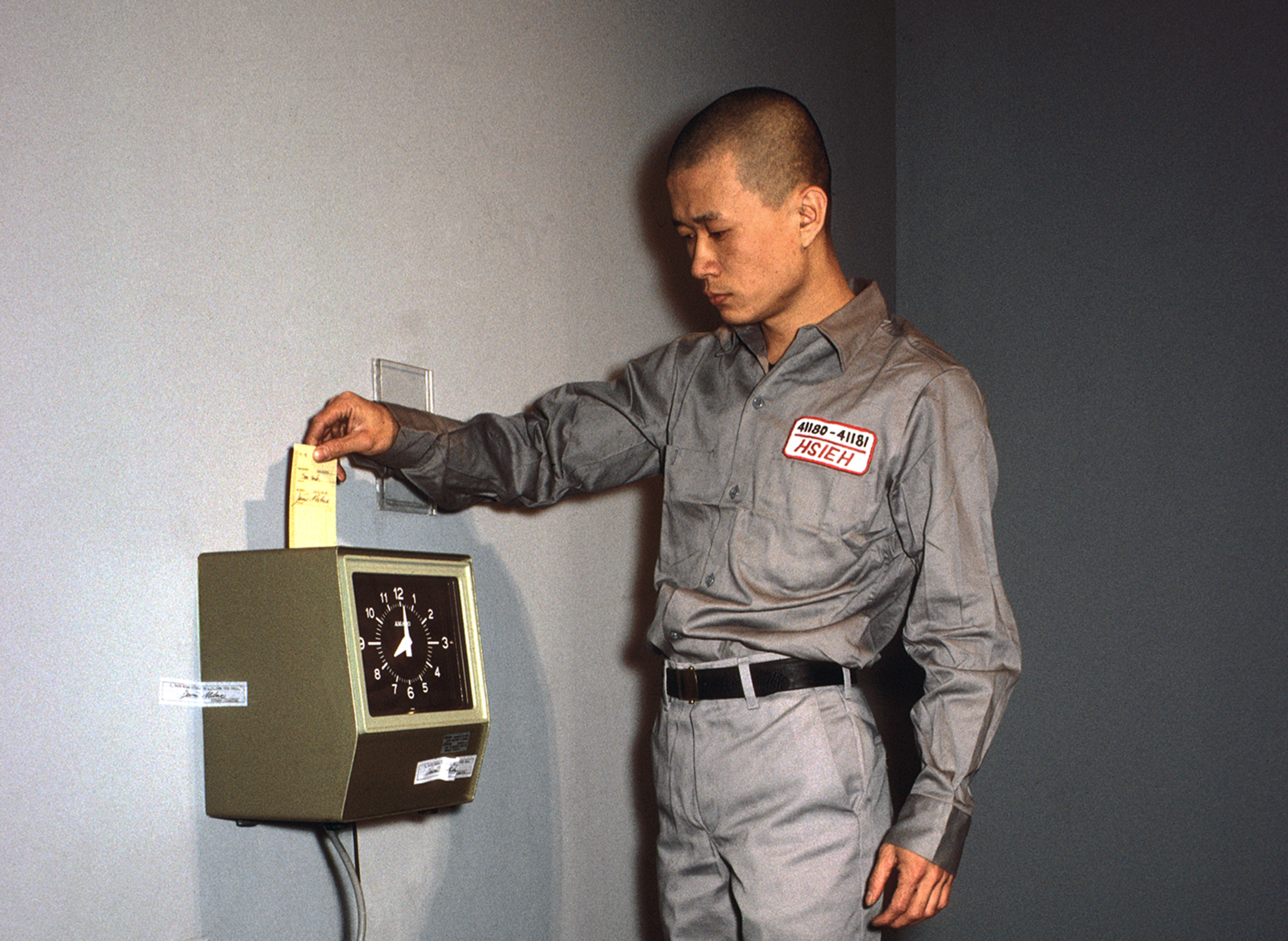
Foundation
The inaugural DHC Session exhibition, Living Time, brings together selected documentation of renowned Taiwanese-American performance artist Tehching Hsieh’s One Year Performances and the films of young Dutch artist, Guido van der Werve
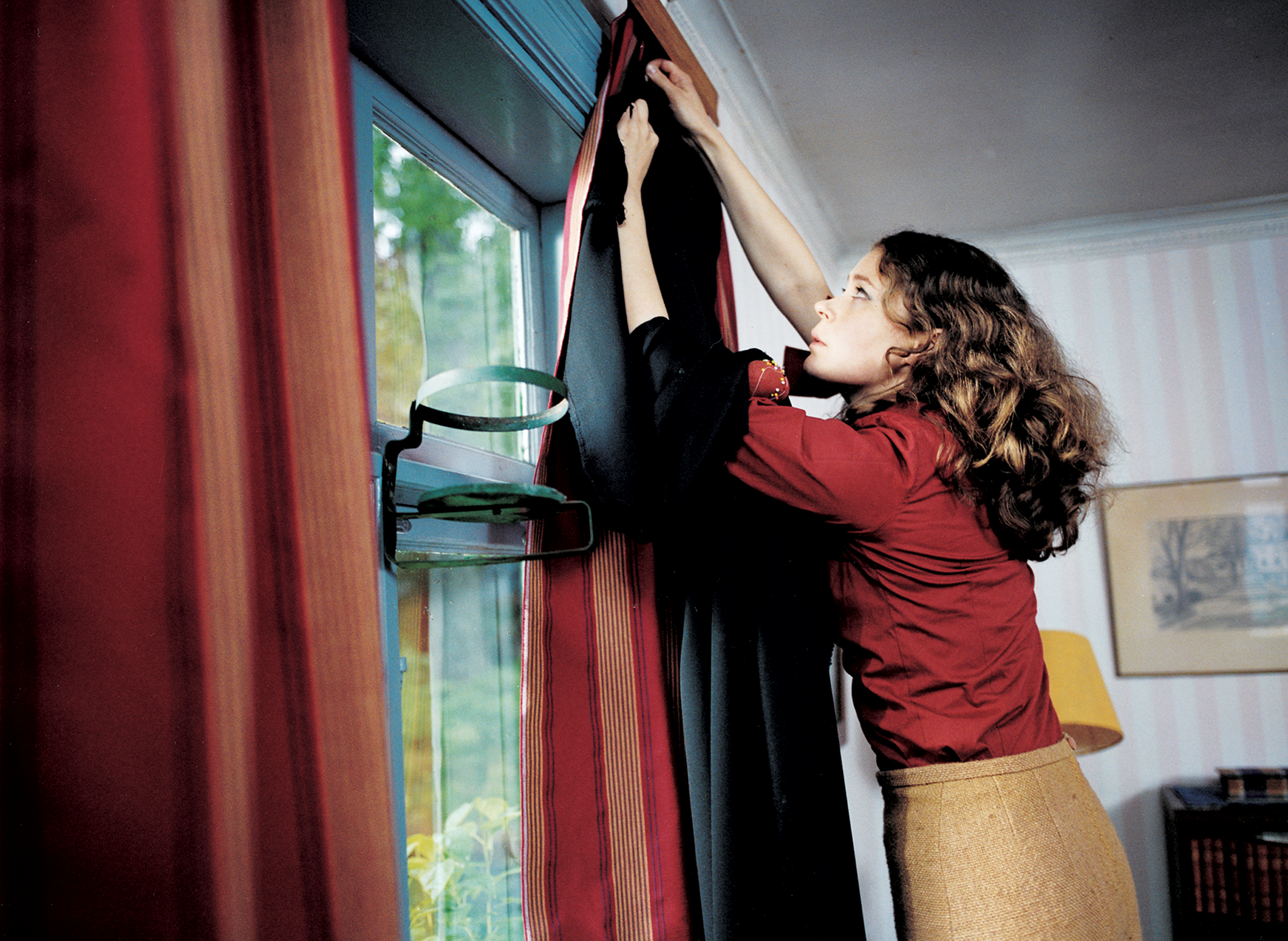
Foundation
Eija-Liisa Ahtila’s film installations experiment with narrative storytelling, creating extraordinary tales out of ordinary human experiences
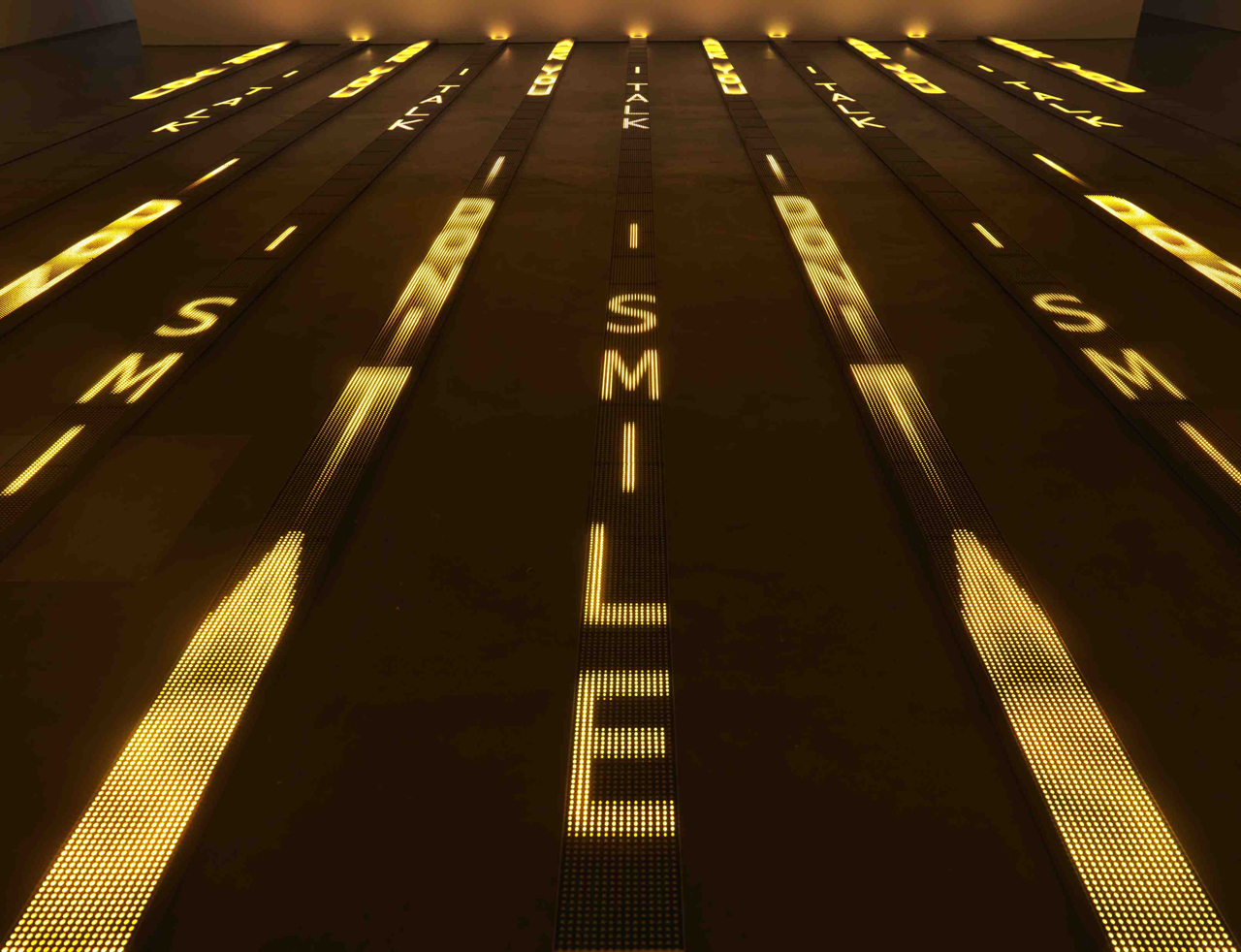
Foundation
For more than thirty years, Jenny Holzer’s work has paired text and installation to examine personal and social realities